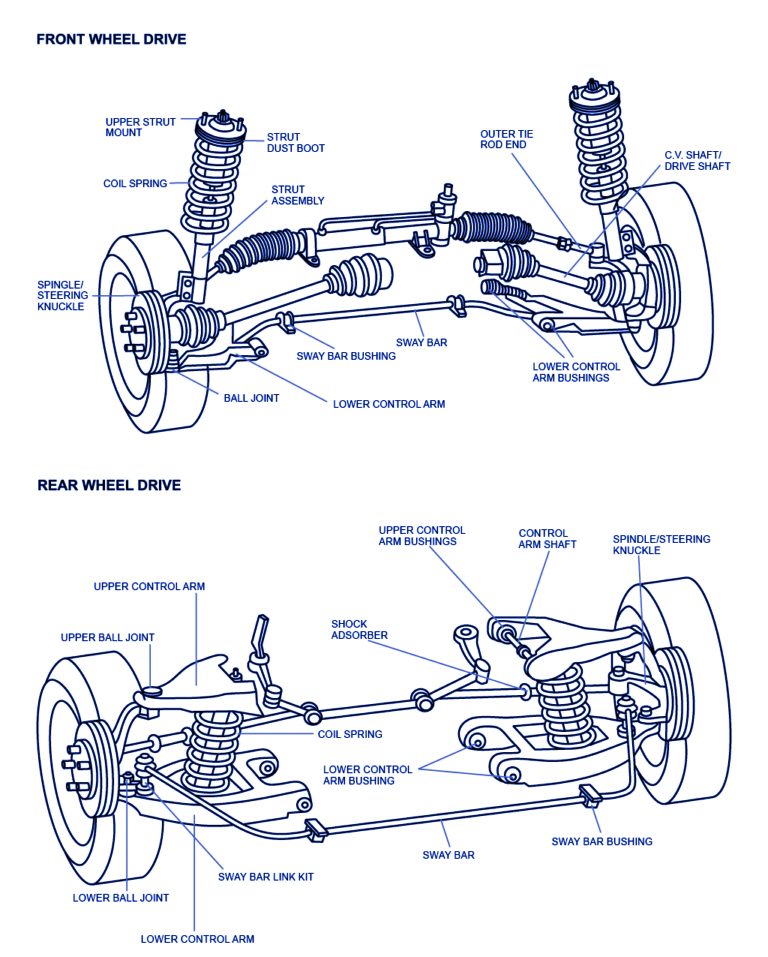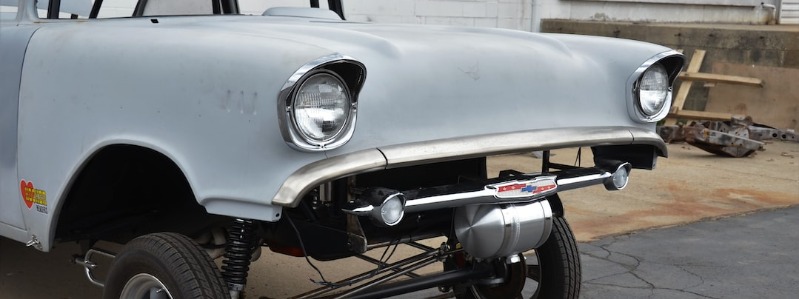Car Axles: Types, Functions, Know When it’s Broken
Contents
Many drivers are not aware that the performance of their vehicle’s wheel system is basically dependent on the condition of their car struts and axles. These components are involved in the vehicle’s steering, driving, and braking, linking the engine’s power to the wheels. They carry the whole weight of the vehicle, plus passengers and cargo. These components can last up to 100,000 miles without needing replacement if undamaged.
Have you wondered how axles and car struts or shocks are related?
Simply stated, the axles are connected to the front wheels. They transfer the torque from the transmission to the drive wheels. But what happens if your axle breaks while driving? The effect is immediate and dangerous since power is no longer transferred from the engine to the tires. Controlling the steering of the vehicle will not be possible, and you may find yourself stranded in the middle of the road.
Preventing axle failure is possible by knowing what to listen for and where to look. If an axle begins to fail while driving, your car will start to pull to one side as one wheel loses power. When the axle breaks completely, its corresponding wheel will no longer turn, and although the engine may still run, the car won’t move. You may see smoke from the axle, and your front tires won’t point in the same direction since one will be completely disconnected.
What do you do if your axle breaks while driving?
Try to get out of the line of traffic if at all possible and call a tow truck.
What are car axles?
Car axles are an essential component of any vehicle. They are responsible for transferring power from the engine to the wheels, allowing the vehicle to move. Without them, a car would simply be unable to drive. Axles come in different types, each designed for specific types of vehicles and driving conditions. It’s important to understand the different types of axles and their functions to ensure optimal vehicle performance and safety.
There are two main types of axles: live axles and dead axles.
Live Axles
A live axle is an axle that is directly connected to the engine and rotates with it. This type of axle is typically found in rear-wheel-drive vehicles and is responsible for driving the wheels.
Dead Axles
A dead axle, on the other hand, is an axle that does not rotate with the engine. It is often used in front-wheel-drive vehicles and is responsible for supporting the vehicle’s weight.
Different types of axles are designed for specific driving conditions. For example, an off-road vehicle will have different axles than a typical sedan, as off-road vehicles require axles that can withstand rugged terrain and heavy loads.
Knowing the different types of car axles and their functions is important, as it can help you identify problems with your vehicle. If you notice any unusual noises or vibrations while driving, it could indicate that your car axle is damaged or broken. It’s important to address these issues promptly to avoid further damage and ensure your safety on the road.
Types of car axles
Car axles are an essential component of a vehicle’s drivetrain and come in different types. The two main types of car axles are the front axle and the rear axle.

Front Axle
The front axle is responsible for steering and transmitting power to the front wheels. In modern cars, the front axle is usually a constant-velocity (CV) axle, allowing for smooth power transfer to the wheels and the suspension to move up and down.
Rear Axle
On the other hand, the rear axle is responsible for transmitting power to the rear wheels and providing support for the vehicle. Rear axles come in different types, including solid axles, independent rear suspensions, and semi-floating axles.
Solid Axle
Solid axles are the most common type of rear axle found in trucks and SUVs. They are sturdy and capable of carrying heavy loads but can be challenging due to their weight. On the other hand, independent rear suspensions are lighter and provide better handling and a smoother ride.
Semi-floating axles
Semi-floating axles are also found in some cars and compromise solid and independent axles. They are lighter than solid axles but not as capable of carrying heavy loads.
Signs of a broken car axle
One of the most common signs is a clicking or popping noise when you turn the steering wheel. This noise is usually heard when the car turns at both low and high speeds. Another sign of a broken car axle is a vibration in the steering wheel or the car itself.
You might feel this vibration when you are driving at higher speeds. In addition, if you notice that your car is leaning to one side or another, it could be due to a broken car axle. This can happen when one wheel bears more weight than the other due to a broken axle.
If you experience these signs, taking your car to a professional mechanic as soon as possible is important to avoid further damage or accidents.
What to do when a car axle breaks
Driving with a broken car axle is incredibly dangerous and can cause severe damage to other parts of your car. If you suspect your car axle is broken, you should immediately pull over to a safe location and turn off your engine.
If you are unsure if your car axle is broken, some signs to look out for include:
- strange vibrations
- clunking noises
- difficulty steering
- uneven tire wear
If you experience these symptoms, it’s best to take your car to a qualified auto mechanic to diagnose the problem.
Once you have confirmed that your car axle is broken, you must have it repaired or replaced. This can be an expensive repair, but it’s important to have it done correctly to ensure your safety on the road.
In some cases, you may be able to drive your car to the mechanic’s shop, but it’s important to do so slowly and with caution. If your car axle is completely broken, you must have it towed to the mechanic’s shop for repair.
FAQs about Car Axles
There are several frequently asked questions about car axles; here are some of them:
What are the types of car axles?
There are two types of car axles: live and dead. A live axle is an axle that delivers power to the wheels while also holding them in place. A dead axle is an axle that simply holds the wheels in place and does not deliver power.
How do I know if my car axle is broken?
There are several signs that your car axle is broken, including a clunking or clicking noise when turning, vibration when driving, and uneven tire wear. You may also notice that your car is pulling to one side or has a noticeable fluid leak.
How often should I check my car axle?
Having your car axle checked during your regular maintenance schedule is a good idea. Typically, this is every 10,000-15,000 miles. However, if you notice any of the above signs, you should have it checked immediately.
Can I fix my car axle myself?
Trying to fix your car axle yourself is not recommended unless you are a trained mechanic. Attempting to fix it yourself can lead to further damage and be dangerous. Taking your car to a professional mechanic who can diagnose and repair the issue is best.
How long does a car axle last?
The lifespan of a car axle can vary depending on several factors, including driving conditions and maintenance. On average, a car axle can last between 100,000-200,000 miles. However, if you notice any signs of damage or wear, it’s important to have it checked and repaired as soon as possible.
We hope you enjoyed our comprehensive guide to car axles, including their types, functions, and how to know when they are broken. It is essential to have a good understanding of your car’s axles, as they play a crucial role in the vehicle’s handling and overall safety. With the information provided in this article, you should now be able to identify any issues with your car’s axles and know when to repair or replace them. We hope that this guide has been helpful to you and will keep you safe on the road.

